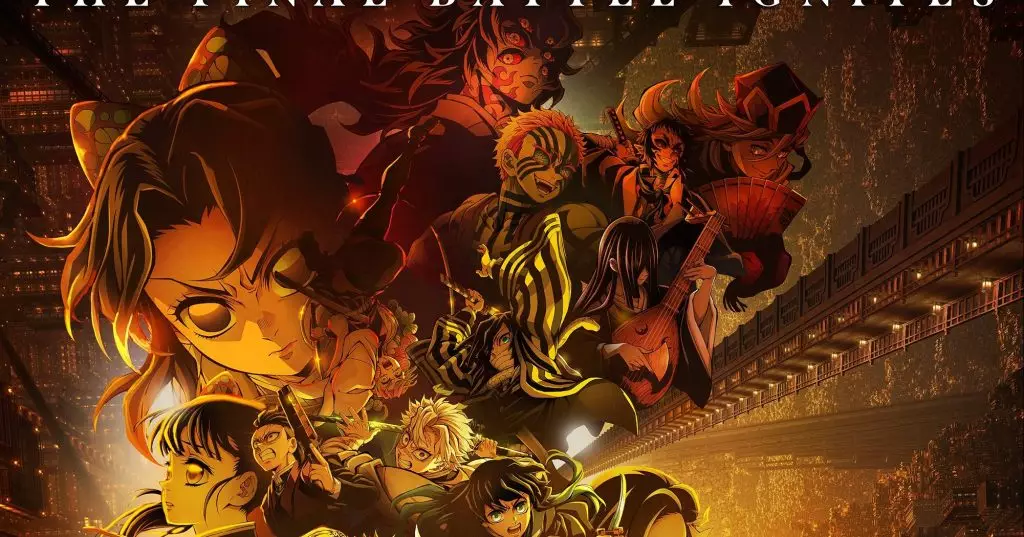The landscape of the entertainment industry is undergoing a subtle but undeniable transformation. Traditionally, blockbuster cinema was defined by big-budget, Hollywood-powered spectacles that aimed for mass appeal—think of the Marvel juggernauts or franchise tentpoles. However, recent trends suggest that niche markets, particularly anime, are now not only competing but in some cases surpassing their Western counterparts in terms of attention and box office impact. This shift points toward a more fragmented yet intensely loyal audience base that is capable of driving enormous revenue through dedicated fandoms.
The surge in anime’s domestic popularity, exemplified by records shattered by films like “Demon Slayer: Infinity Castle,” reflects this change. Unlike Hollywood blockbusters that rely heavily on broad demographic appeal, anime films are consciously targeting committed viewer segments who exhibit remarkable early engagement—pre-sales, early screenings, and social media buzz. Such dynamics are reshaping what a successful opening looks like. The old model of prolonged box office stretches no longer applies when films like “Infinity Castle” demonstrate the potential for front-loaded, fervent support from core fans. This calls into question whether traditional Hollywood productions need to recalibrate their strategies, for if we are witnessing the rise of a consumer base that values quality, authenticity, and niche storytelling, the blockbuster era might be giving way to a new paradigm centered around passionate, highly involved audiences.
Economic Implications and the Future of Animated Films
Anime’s current success isn’t just about Japan anymore; it’s a clear indicator that international markets are now vital to the financial viability of animated films worldwide. The record-breaking opening of “Infinity Castle” across Southeast Asian markets and its surpassing of previous regional benchmarks underscore how global audiences are embracing this genre. Moreover, the fact that the film’s international box office accounts for a significant portion of its earnings demonstrates a geographical diversification that Hollywood movies have historically relied on less.
This trend raises an important question: should Hollywood recognize anime and similar niche genres as viable, standalone competitors? The answer appears to be a cautious yes. The market share they command, especially during the opening weekend, is proving hard to ignore. The fact that “Infinity Castle” already grossed nearly $193 million globally, with a large chunk from Japan, indicates market confidence and suggests that if Hollywood continues to produce and market mainstream blockbusters in the same traditional manner, it risks becoming increasingly irrelevant in the face of such focused demand.
From an industry perspective, this points toward a necessary pivot. Studios must learn that catering to highly engaged, fanatic audiences with tailored content can be far more economical and profitable than investing billions into blockbuster franchises that sometimes underperform or fade quickly. The growth of anime films epitomizes this shift—a wedge that threatens to displace the monolithic Hollywood model with a more versatile, culturally diverse, and ultimately efficient ecosystem built around dedicated fanbases.
Why Hollywood’s Future Might Depend on Embracing Niche Markets
If Hollywood wants to maintain its dominance in global entertainment, it must adapt to the changing tastes of modern audiences. The rise of anime—manifested through record-setters like “Demon Slayer”—serves as a wake-up call. It’s no longer enough to throw vast sums into CGI-laden spectacles that aim for universal appeal; instead, success may increasingly hinge on understanding and cultivating fan communities capable of generating substantial pre-sales, social media engagement, and rapid box office frontloading.
Furthermore, this shift reveals potential pitfalls for Hollywood’s traditional “blockbuster” approach. Films built solely around mass-market appeal tend to be riskier investments, especially in an era where digital streaming platforms fragment audiences even further. Anime’s international success vectors show that authenticity and cultural specificity, paradoxically, can translate into global commercial returns. For Hollywood, the lesson is clear: diversify your portfolio, invest in stories that resonate deeply with particular audiences, and embrace the cultural nuances that make niche genres like anime so compelling. Only then can they hope to remain relevant in a competitive, fractured market—one where passion, not just spectacle, reigns supreme.

